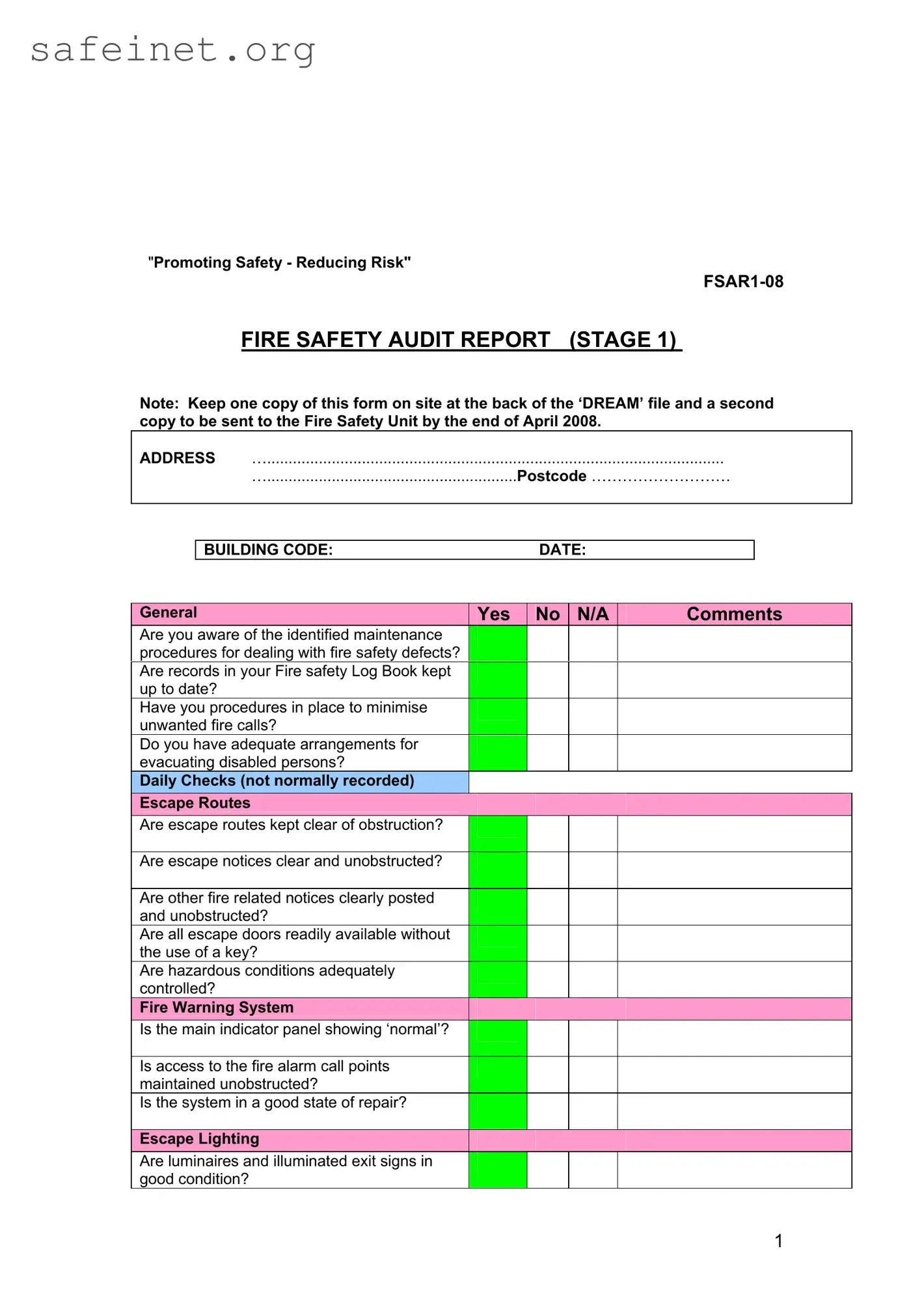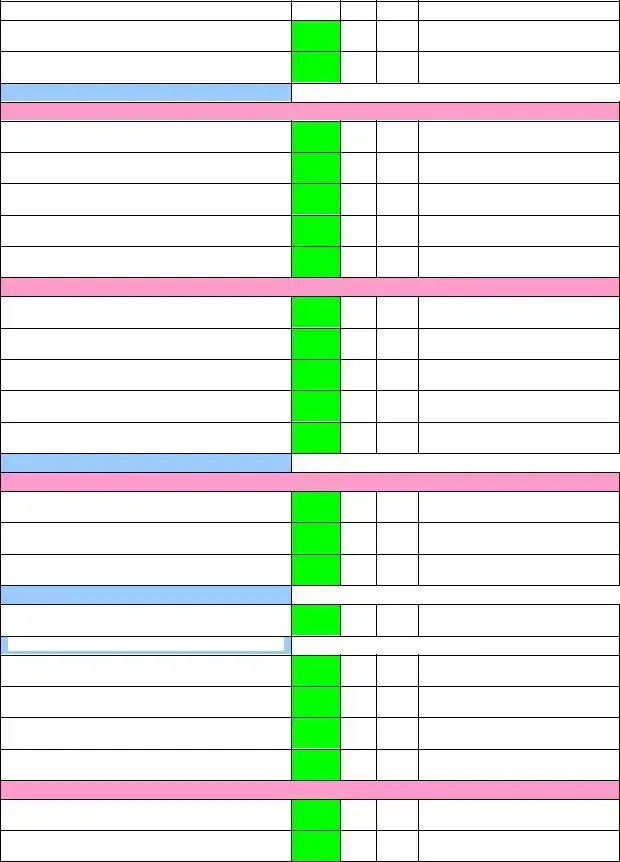Fire-Fighting Equipment |
Yes |
No |
N/A |
Comments |
|
|
|
|
|
Are all extinguishers in their allotted positions and fully charged?
Are all extinguishers clearly visible or is a sign provided to indicate location?
Weekly Checks
Escape Routes
Do all emergency fastening devices to fire exits work correctly?
Do all automatic opening doors work correctly?
Are all fire resisting doors in good condition with self closing devices working correctly?
Are external escape stairs in good condition?
Are external escape routes clear and available?
Fire Warning System
Do you carry out a weekly call point test?
Do all linked fire protection systems work correctly? (e.g. fire door hold open devices)
Do all sounders, visual indicators and vibrating pagers work correctly?
Is the fire signal audible throughout the building?
If you have a voice alarm is the message clear and understandable?
Monthly Checks
Escape Routes
Are any electronic access/egress override controls provided? (green break glass boxes)
Are ‘green’ break glass devices tested?
Do all fire shutters provided for compartmentation work correctly?
Quarterly Checks
Are fire hydrants clearly indicated and unobstructed?
Annual Checks (record date in comments)
Have all staff including part time received refresher fire safety training?
Have staff trained in the use of disabled evacuation aids received refresher training?
Have you carried out an evacuation drill in the last 12 months?
Is the building structural layout the same as it was at the time of last years report?
Emergency Plan
Is your prepared Emergency Plan up to date?
Are sufficient numbers of staff nominated to implement plan?
You should carry out a review of your Fire Risk Assessment whenever a
material change takes place and notify the Fire Safety Unit.



